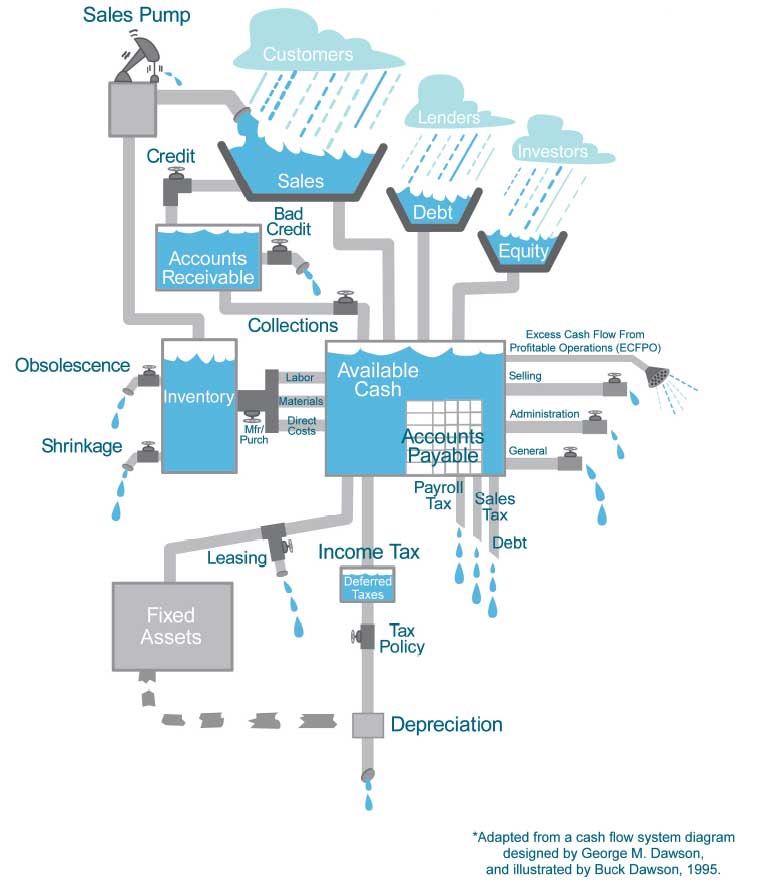Lesson 3: Pricing
It’s hard to put a price on success. It’s even harder to put a price on something you love to make and sell.
While it may be tempting to just give it away, we’ll show you the calculations and considerations you need to make informed decisions about pricing your products.
Pricing
Pricing Your Products (continued)
Variables that affect cash flow
Here are some of the things that will affect your business’ cash flow:
Inventory. Unsold products cost you money; sold products make money. In the Cottage Foods world, unsold items must be thrown away. Ingredients are also inventory, which can become unusable and need to be tossed. This is known as shrink, which negatively impacts your bottom line.
Speaking of inventory, buy everything in bulk whenever possible and buy to the price break. If you need 125 of something and they offer it cheaper, if you buy 150, buy the 150 (assuming you have space to store it). Find suppliers that will give you wholesale terms for your ingredients and packaging. Avoid retail whenever possible since it will cut into your profit margin.
Fixed assets. Computers, machinery, equipment and any upgrades made to the space are fixed assets. These tie up your cash and empty the tank you’re trying to keep full. Some assets can be amortized over time or deducted in full from your taxes, which may help the tank stay full.
A word about equipment. Always buy equipment that gets good ratings from reputable reviewers. Even if you’re on a tight budget, buying a quality mixer, pans, dough machine, etc., will save you money down the road. Case in point: Some Kitchen Aid mixers manufactured in the 1950s are still in operation today. Nothing’s worse than finding a deal on a piece of equipment, only to find that it can’t keep up with you and needs to be replaced a year or two down the road.
Accounts receivable. Any sales you make on credit can’t be counted until it is paid. Offering credit, such as NET 20, means that your customer gets to use your money for 20 days before you can use it. The only money that counts is the money in your hand at the end of the day. If you can’t collect the money owed, it lowers the level of the tank.
Sales. This is the easiest way to refill the tank and keep it full. This is your flow of customers, old and new, who actually buy from you.
Accounts payable. This is the money you owe vendors, suppliers and other creditors. Think of them as bricks in the tank. They can temporarily increase the level of cash available since you can use good credit or favorable payment terms (NET 20) to have a line of credit. Just remember that these bills will come due at some point, and you will need to pay them off.
Paycheck. See the shower on the right of the diagram? That’s where you get paid. This comes from your excess cash flow after everything else has been covered.
As for that leakage at the bottom of the tank? It is the fixed assets above which can be depreciated as a tax savings strategy. This is a bit too complex to cover here. You will want to speak with a tax adviser or accountant to develop a workable strategy for any fixed assets in your business.
If you’re a self-starter and would like to know more about mastering your business financials, hop over to our Mastering Financials section of MyStartup365.com.
Here’s the chart again if you want to see where these variables fit in your total cash flow:
Return to Main Office
Courses
Introduction
1. Cottage Food Basics
2. The Business Plan
3. Pricing
4. Marketing
5. Food Booths
6. Food Trucks
7. Pop-Ups
8. Brick & Mortar
9. Exit Strategy

A final word on costs
When you’re figuring out the pricing sweet spot for your products and your business, it may be shocking to do initial calculations and find you need a 60% markup per item to make selling worthwhile (60% is the average markup for a Cottage Food product currently).
As you go about your day, check out what the competition is selling their products for. In doing your own research, you know what the ingredients cost, so you have a rough idea of what it costs them to make the same or similar product. Note the sale price and do your own math to figure out their markup.
Remember that each product may have a different sale price even with the same cost and markup. The market ultimately determines the price you can charge and what a customer is willing to pay. But there’s also the psychology of consumerism, where people are willing to pay more for a product that they perceive tastes better, looks better or carries some kind of prestige that comes with the purchase. One only has to look at Trophy Cupcakes to see how this can play out. They have made a name for themselves with decadent cupcakes and have since branched out to other premier treats.
Certain times of the year allow you to increase your prices as well. Valentine’s Day is the perfect time to put together a special gift pack of themed cookies or chocolates. People always look for something unique and different to buy when a holiday rolls around.
Your location will also affect pricing. People in smaller towns tend to be more value-conscious. That’s not to say they are cheap by any stretch, but they don’t get caught up in the latest trends found in larger cities. Plus, they are closer to the source of the ingredients. They may even be selling them to you.
